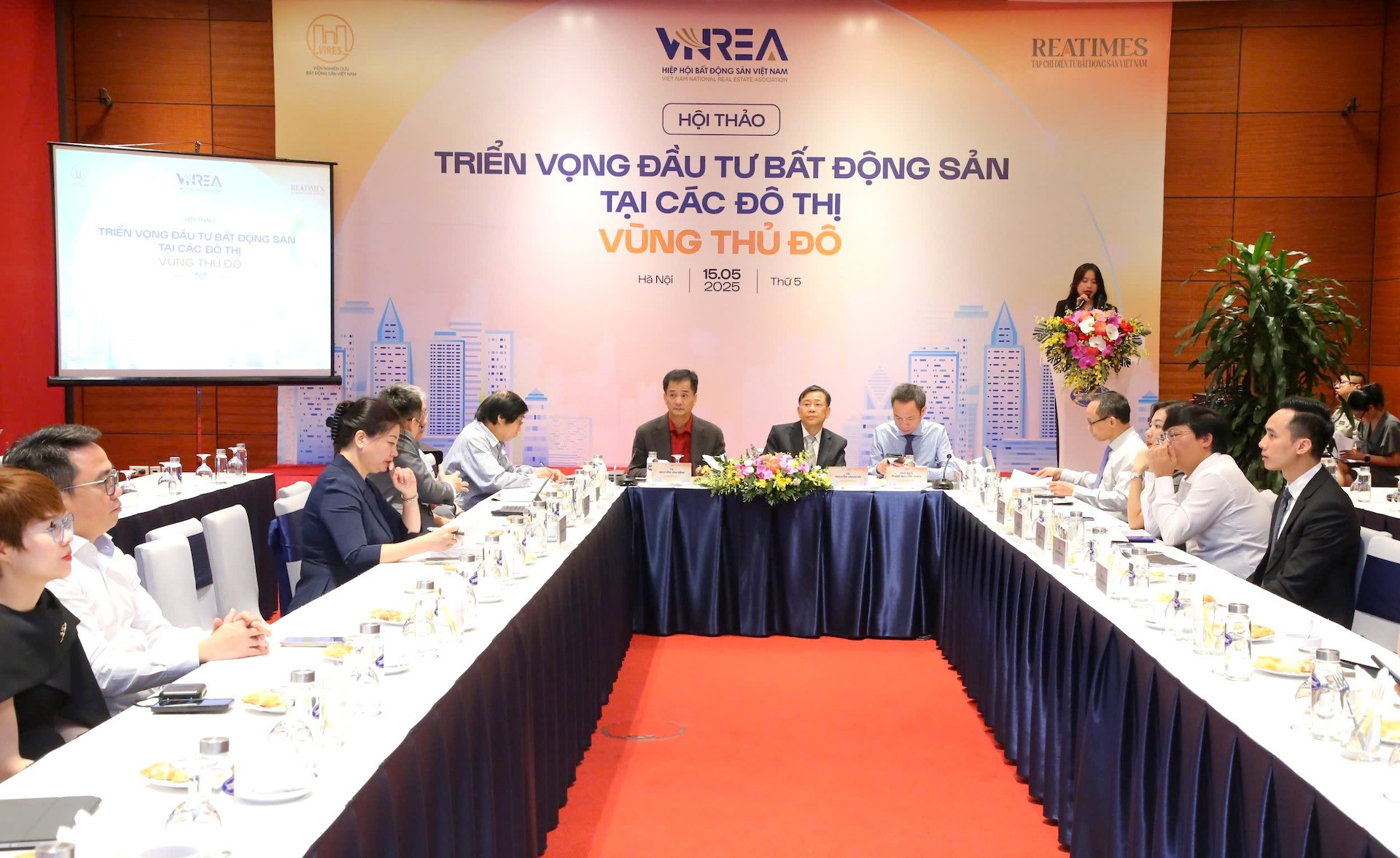
Since late 2024, investment in real estate in the capital city region has surged significantly. More attention is being paid to areas along Ring Road 4 and industrial corridors connecting Hanoi with Bac Giang, Hung Yen, and Hai Duong.
The Ring Road 4 project in the capital region commenced in June 2023. The total length of the route is 112.8 km, with 56.5 km passing through Hanoi, 20.3 km through Hung Yen, and 21.2 km through Bac Ninh. The total investment for the project is VND85,813 billion.
A survey conducted by the Vietnam Real Estate Research Institute, was made public by Nguyen Van Khoi, Chair of the Vietnam Real Estate Association (VNREA), at the seminar “Prospects for Real Estate Investment in the Capital Region’s Urban Areas” held some days ago.
Commenting on the real estate market after the mergers, Khoi said an opportunity will exist to expand urban spaces and create substantial development. Real estate is the sector that will benefit the most as resources and planning become more cohesive.
In the Hanoi region, which includes the nine neighboring provinces of Bac Ninh, Bac Giang, Vinh Phuc, Hung Yen, Hai Duong, Ha Nam, Hoa Binh, Phu Tho and Thai Nguyen, the mergers will speed up urbanization. Consequently, the region’s real estate market is poised for a significant development.
Khoi noted that satellite cities around Hanoi have emerged as vibrant investment destinations due to increasingly developed infrastructure and abundant land reserves.
“In recent years, provinces neighboring Hanoi have strongly attracted real estate investment capital. Many investors have been flocking to peripheral areas, creating a wave of leaving the crowded inner city for the suburbs,” Khoi said.
He said interest is focused on major transport axes like Ring Road 4 and industrial corridors linking with Bac Giang, Hung Yen, and Hai Duong. Capital flows are transforming satellite cities into new market epicenters.
Explaining the appeal of satellite cities, experts highlight that vast land reserves and reasonable prices are key factors.
Provinces such as Vinh Phuc, Hung Yen, and Ha Nam and others can provide large land banks for modern urban projects that cannot be implemented in inner city Hanoi with limited land.
Additionally, the inter-regional transport system is being significantly enhanced. Key projects like Ring Road 3, Ring Road 4, inter-provincial expressways (Hanoi – Hai Phong, Hanoi – Lao Cai, Hanoi – Thai Nguyen, etc.) and future urban railway systems will more effectively connect the core region with peripheral areas.
Living in Bac Ninh, Hung Yen or Vinh Phuc while working in Hanoi is becoming increasingly convenient, busting the trend of population decentralization from the inner city.
Which segments will lead the market?
Le Dinh Chung, General Director of SGO Homes, said that property prices in the capital region’s provinces are currently three to five times lower than in Hanoi, creating a “dual opportunity” for both investors and real homebuyers.
Dung predicted a strong market recovery in these provinces after June 2025.
Both Chung and Khoi agreed that the residential segment for those who have real demand for accommodations, rather than investors and speculators, will lead the market thanks to convenient locations and clear legal frameworks.
Additionally, industrial and logistics real estate holds significant potential for a breakthrough in the capital region, an area that stands out as an FDI hotspot with large industrial parks in Bac Ninh, Bac Giang, Vinh Phuc, Hung Yen, and Hai Duong.
“The demand for factories, warehouses, and logistics services will rise as FDI continues to flow in, especially as Vietnam integrates deeper into the global supply chain,” Khoi said.
For investors, Chung recommended focusing on the intrinsic value of real estate, prioritizing products with transparent legal status to avoid risks. At the same time, investors should allocate capital wisely and consider satellite provincial markets with growth potential.
“A long-term investment strategy, rather than short-term speculation, will help maximize sustainable profits,” Chung said.
Asked where to pour money to, Nguyen Anh Que, Chair of G6 Group, told VietNamNet in late April that the land market in Hanoi and some surrounding areas began to see price increases in the first quarter of 2024, with prices rising by an average of about 50 percent to date.
Investing in land in Hanoi and Hung Yen is not advisable due to the already high price levels in these areas.
Meanwhile, some provinces such as Hoa Binh, Phu Tho, Vinh Phuc, Ha Nam, Ninh Binh, Bac Giang, and Thai Nguyen can still be considered for investment, although land prices in these areas have recently increased by about 10-30 percent.
Hong Khanh